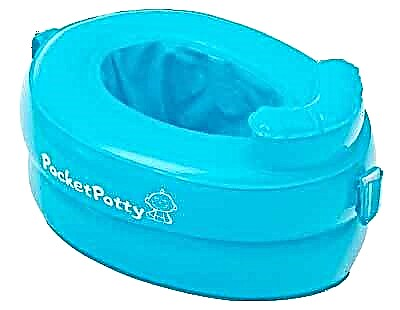Ways to facilitate teething without gels and ointments. Simple and effective folk remedies that are well known to our grandmothers and mothers.
Teething is a difficult time for babies and their parents. During this period, children are capricious, refuse to eat and sleep poorly, and sometimes teething is accompanied by fever, runny nose and indigestion. In pharmacies there are many gels and ointments to facilitate teething, but many mothers do not want to use "chemistry" and get by with folk remedies. They are no less effective, and will definitely not harm the baby's body.

- Mom's finger. Hands should be well washed and nails clipped. The baby's mother's finger will chew and bite with ecstasy, and the mother can gently stroke and scratch the baby's gums. You can also wrap your finger with gauze dipped in soda or borax solution (1 tsp in a glass of water);
- Soda. The most common anti-inflammatory agent found in every home. It is necessary to prepare a solution from soda - dilute a teaspoon of soda in a glass of water and lubricate the child's gums several times a day;
- Chilled food. Most teethers are gel devices that are refrigerated and that scratch the gums to soothe them with the cold. Our grandmothers used chilled pieces of fruits and vegetables (apples, carrots) for these purposes - they soothe sore gums and are absolutely safe for children. The crumb pounded a piece of vegetable, which scratched and cooled the gums without causing any harm. Drying can be used for the same purpose. Don't give your toddler crackers. Firstly, they can scratch the inflamed gums, and secondly, it is easy to choke on a piece of crackers;
- Cold cloth or ice. You can let your baby chew on wet, chilled gauze or a piece of flax by wrapping a piece of ice in it. The main thing is that everything that gets into the child's mouth is absolutely clean. It is necessary to constantly monitor that the ice itself does not touch the gums, it is also very important that the ice in the cloth constantly moves along the gums, without staying long in the same place;
- Now on sale there are special soft handkerchiefs with a soft toywhich can also be chewed. You can try giving a baby soft toothbrush;
- Chamomile is a good anti-inflammatory agent. It can be applied in several ways. To relieve pain, give your baby one or two teaspoons of chamomile tea. You can make a warm compress from the brewed herb and apply it to the teething side of your cheek. You can also rub chamomile oil into your cheeks;
- Sage. Girls can be given a weak sage infusion and rubbed into the gum. Sage will strengthen the tooth and gum tissue. Sage broth can be added to the bath when bathing, it has a calming effect;
- Tincture of burdock root and asterisk. Helps with gum disease. A mixture of these infusions should be rubbed into the gums in the place where the tooth should "hatch";
- Clove oil. Has an analgesic effect on the inflamed gums of the baby. In its pure form, it can burn the gums, therefore, before use, dilute with almond or olive oil in a ratio of 1.5 to 1;
- Valerian. The valerian tincture, which is made with brandy, soothes the gums. To prepare the tincture, crush 30 g of valerian roots into powder and fill them with half a glass of brandy. Insist 3 days, then strain. Lubricate the gums with tincture to relieve itching;
- Plant roots. To relieve itching and pain in the gums, your baby can be nibbled on chicory or strawberry roots. They are absolutely safe for the body and contain substances that relieve inflammation, discomfort and itching. Pharmacies sell special teething rings made from violet root - they can be used in the same way as synthetic materials;
- Honey. Helps teething. Honey can be used only if the child is not allergic to it. You need to apply a little, rubbing into the gums, otherwise the baby will simply lick the honey. Before going to bed, you can give your child a teaspoon of honey with tea or water - this will calm him down and speed up the process of falling asleep;
- Soothing tea. Tea will be useful for both mother and baby, as it has a calming effect, and it will also ease pain for the baby. Take equal parts lemon balm, chamomile, catnip and lavender flowers. Pour a tablespoon of the collection with a glass of boiling water and leave for 15 minutes, then strain. Tea can be drunk in any quantity, it is safe for both the child and the mother;
- Amber beads. Our ancestors often used amber beads to relieve pain, and its use has a scientific basis. The Baltic amber beads contain about 8% succinic acid, which is a natural pain reliever. The beads should be worn under the baby's shirt and in contact with the baby's skin. Check the thread on which the beads are strung, preferably a ribbon that cannot be torn, tied into several complex knots. Simple clasps for children are not safe. Never leave your baby to sleep with beads on. During the day wear beads under adult supervision .;
- Raw silk. To relieve unpleasant symptoms, you can tie a thread of raw silk around your baby's wrist. Change the thread as it gets dirty, but do not remove it until all the teeth have erupted.
The mattress at the head of the bed where the baby sleeps should be slightly raised to reduce blood flow to the gums and reduce inflammation. To strengthen the erupted teeth, the child needs to be given foods containing calcium, phosphorus (milk and cottage cheese), as well as vitamins A, B, C.
We read further:
- From how many months the first teeth are cut and in what sequence
- Problems during teething
- How to relieve your child's teething pain: 5 powerful tips. Video consultations of specialists, plus the personal experience of moms
- Teethers: types of teethers, tips for choosing
- Ambulance for teething in a baby: TOP - 7 gels for gums
- When can small children start brushing their teeth (how to teach a child to brush their teeth).



